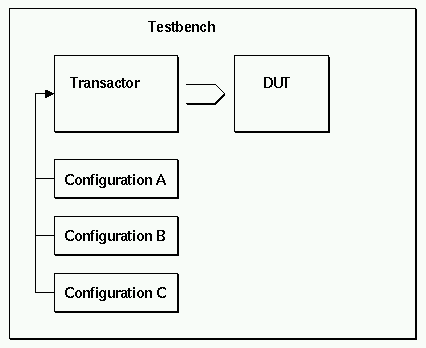
Configuration controlled Test Selection
In this approach the transactors contain the code for all tests. The behaviour
of the transactor can be controlled by a generic. The value of the generic
defines which test is run. For each test a configuration statement exists which
selects the test in the transactor by assigning the appropriate value
to the generic parameter. (For example: configuration tb_A selects test A in
the transactor by assigning the value "test_a" to the generic testselector
of the transactor.)

Some problems of this approach are:
- Transactor code becomes very large and difficult to handle
- Modifying the transactor code for one test could potentially cause
a problem in another test (e.g. accidental editing)
Some of the benefits are:
- Pure VHDL, no dependency on OS specific tools
- Tests can be compiled before simulation, so syntax errors are detected before the
simulation runs
- Tests can be readily understood by designers who are familiar with VHDL
- All structural elements of VHDL are available
- Tests can react flexibly on the response of the DUT, full access to all signals known to the
transactor is possible








